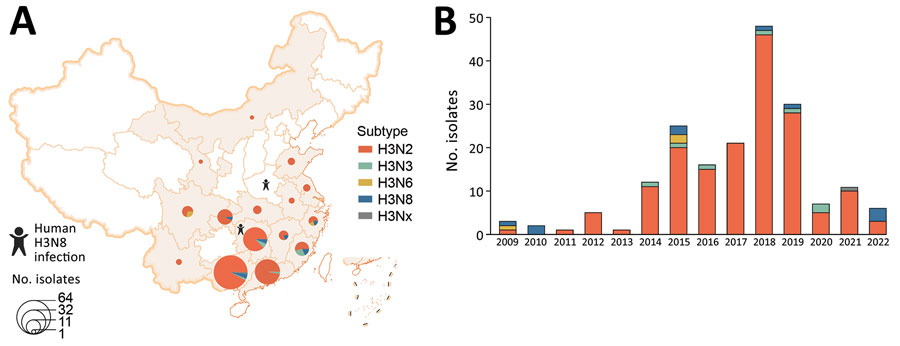Volume 29, Number 6—June 2023
Research
Evolution of Avian Influenza Virus (H3) with Spillover into Humans, China
Figure 1

Figure 1. Spatial and temporal distribution of avian influenza virus subtype H3 isolated from poultry-associated environments, China, 2009–2022. A) Spatial distribution of environmental H3 subtype viruses. One H3 isolate without neuraminidase (NA) subtype was designated as H3Nx. Provinces where human infections with H3N8 were reported are noted. B) Number of environmental H3 subtype isolates per year. This figure includes all H3 isolates sequenced by the Chinese National Influenza Center. Additional metadata are available in Appendix Table 1.
1These authors contributed equally to this article.
Page created: April 06, 2023
Page updated: May 17, 2023
Page reviewed: May 17, 2023
The conclusions, findings, and opinions expressed by authors contributing to this journal do not necessarily reflect the official position of the U.S. Department of Health and Human Services, the Public Health Service, the Centers for Disease Control and Prevention, or the authors' affiliated institutions. Use of trade names is for identification only and does not imply endorsement by any of the groups named above.